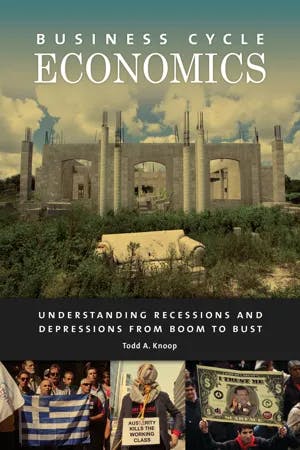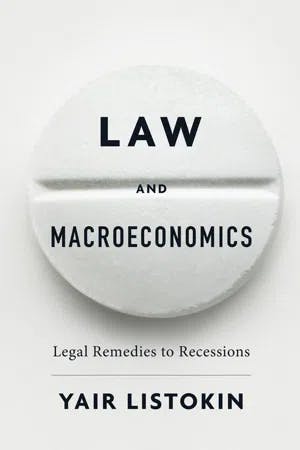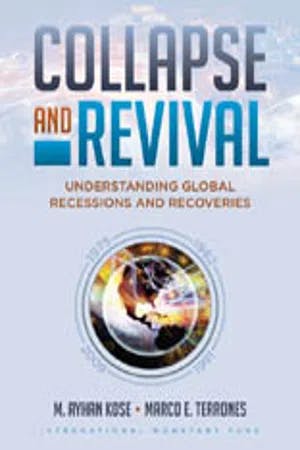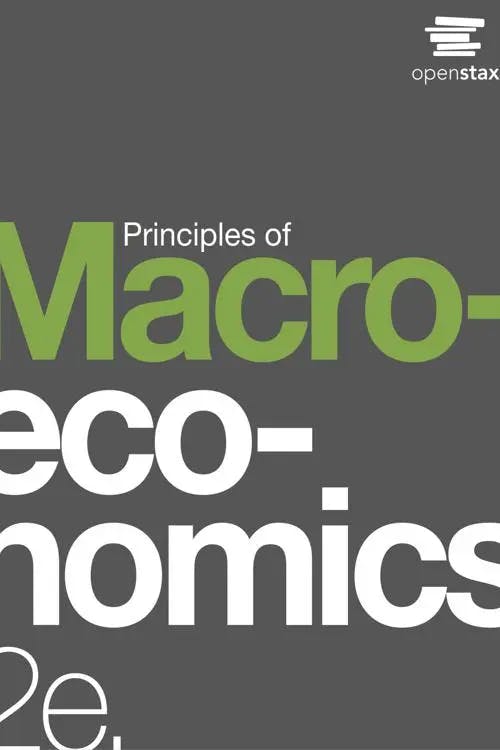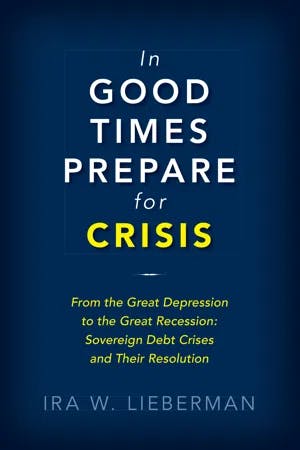What is a Recession?
MA, Management Science (University College London)
Date Published: 08.11.2023,
Last Updated: 08.11.2023
Share this article
Defining recessions
Economies behave cyclically. They have their ups and downs, facing times of prosperity and hardship over the years. Economists refer to these ups and downs as the natural booms and busts of economies. The bust periods are commonly known as recessions; a sustained period (anything between 2-18 months) of weak or negative growth in real Gross Domestic Product (GDP). Indeed, as explained in the book Macroeconomics: A Contemporary Introduction (McEachern, 2016), recessions are characterized by a fall in economic activity, employment and production:
The national economy usually grows over time, but along the way it sometimes stumbles, experiencing recessions in economic activity, as reflected by a decline in production, employment, and other aggregate measures. (2016)
William A. McEachern
The national economy usually grows over time, but along the way it sometimes stumbles, experiencing recessions in economic activity, as reflected by a decline in production, employment, and other aggregate measures. (2016)
It is not uncommon to see the word “recession” all over the media, whether that is in newspapers or in TV broadcasting. For example, in July 2023, the BBC reported that the UK would be facing a recession between July and September caused by the rise of interest rates and the decrease in consumer spending across the nation. The current situation in the US is somewhat different, with the economy heading towards a period of prosperity and economic growth (also known as a boom in the economic cycle). Media outlets like CNN will nonetheless still use the term “recession” in their articles to explain and report on the economic prospects.
People often react negatively and fearfully towards the term, thinking that recessions imply a loss of jobs and a decrease in income. Although this is true, recessions are often an unavoidable phase in the economic cycle. What is more, recessions are an essential phase for economists to understand how economics works and consequently design effective policies to address them. Indeed, Todd A. Knopp explains in Business Cycle Economics (2015) that just like mechanics learn their job by fixing broken cars, economists learn their profession by fixing “broken” economies in times of recession.
When it comes to the state of economic knowledge, nothing improves economists’ understanding of how markets and macroeconomics work more than an economic downturn. The most obvious analogy is to an auto mechanic who learns his craft not by working on cars that are running well but by getting under the hood of autos that have broken down. Much the same can be said of economists. Recessions and depressions are essentially the only substitute that macroeconomists have for an experiment; when markets break down so completely, the underpinnings of what is actually driving the operations of fully functioning economies become more readily apparent. Economic contractions are an opportunity for economists to pop open the hood and take a look inside the engine of modern economic systems. (2015)
Todd A. Knopp
When it comes to the state of economic knowledge, nothing improves economists’ understanding of how markets and macroeconomics work more than an economic downturn. The most obvious analogy is to an auto mechanic who learns his craft not by working on cars that are running well but by getting under the hood of autos that have broken down. Much the same can be said of economists. Recessions and depressions are essentially the only substitute that macroeconomists have for an experiment; when markets break down so completely, the underpinnings of what is actually driving the operations of fully functioning economies become more readily apparent. Economic contractions are an opportunity for economists to pop open the hood and take a look inside the engine of modern economic systems. (2015)
Different causes of recessions
Generally speaking, a recession happens when there is a decrease in the output of an economy. Economists mainly look at the levels of GDP to dictate whether an economy is in a period of recession or not. More specifically, if there are two consecutive quarters of negative Gross Domestic Product (GDP), it is said that an economy is facing a recession.
There is an ongoing debate on what exactly triggers recessions. There is confusion as to whether some causal factors are actually consequences of recessions and vice versa. However, literature broadly classifies these causes as being of economic, financial or psychological nature.
Economic causes
Economic causes of recessions are generally known as economic shocks. These are random, unpredictable events that have a significant impact (generally negative) on economic variables such as inflation, unemployment etc. Historically, the most common economic cause of recessions have been oil price shocks. An alarming amount of production processes are powered with oil or fuel. Therefore, if the price of oil increases, so does the general price of producing almost anything. This in turn increases the price of final production outputs (i.e., products and services), which is burdened on consumers and has an effect on the purchasing power of individuals. People start to consume less due to the general price increase (also known as inflation) and economic output drops in response to a decreasing demand. As a consequence, unemployment will generally increase because less people are required to work at lower levels of demand. This, in essence, is a recession. Robert McNally explains this chain of reasoning in his book Crude Volatility (2017).
All in all, while in theory oil prices would rise until they reached a level that made substitutes for gasoline, diesel fuel, and other petroleum products economical, the reality is that in the short run, there are no substitutes for gasoline and diesel. Therefore, in practice, oil prices will rise until energy expenditures become a big enough burden on the consumer and broader economy that they contribute to or cause a recession. (2017)
Robert McNally
All in all, while in theory oil prices would rise until they reached a level that made substitutes for gasoline, diesel fuel, and other petroleum products economical, the reality is that in the short run, there are no substitutes for gasoline and diesel. Therefore, in practice, oil prices will rise until energy expenditures become a big enough burden on the consumer and broader economy that they contribute to or cause a recession. (2017)
Other economic shocks include wars, or pandemics such as the COVID-19 outbreak. The bottom line is that these economic shocks disrupt the functioning of supply chains and industries, generally leading to a fall in the Gross Domestic Output (GDP) of economies.
Financial causes
Financial factors are arguably the most common cause of global recessions. Banks are where most of these financial recessional triggers take place. For example, when banks increase interest rates (i.e., the cost of borrowing money), less people are able and willing to borrow money. With less people borrowing, there is generally less spending in the economy. When these decisions of reducing spending are multiplied across entire populations, economic recessions arise. Equally, if banks are too generous with their lending, people will start borrowing beyond their abilities. This credit bubble builds up to a point where populations fall into serious debt and are unable to repay, causing banks to crash and go bankrupt. These crashes cause the money available in the economy to decrease, and so does the gross domestic output (GDP) as a consequence.
Psychological causes
In Law and Macroeconomics (2019), Yair Listkoin explains that the surge of psychological factors as a cause of recessions goes back to Keynesian Economics.
Traditionally, Keynesians attributed prolonged falls in aggregate demand to psychological causes: “animal spirits” [a term coined by John Maynard Keynes], say, or panic. Animal spirits—the instincts and emotions guiding decision-making—could turn a small and temporary decrease in aggregate demand into a large and sustained decline. (2019)
Traditionally, Keynesians attributed prolonged falls in aggregate demand to psychological causes: “animal spirits” [a term coined by John Maynard Keynes], say, or panic. Animal spirits—the instincts and emotions guiding decision-making—could turn a small and temporary decrease in aggregate demand into a large and sustained decline. (2019)
As a matter of fact, recessions are not always caused by dramatic, bold events which are exogenous to our day-to-day lives. Recessions may start within an individual. For example, if the media paints a pessimistic picture of the current social, economic and political situation in a country, people will lose confidence in the future and take risk-averse measures such as saving in case something bad happens in the future. This pessimism contagiously spreads through word-of-mouth and risk-averse decision making is multiplied across the population. Eventually, more are saving than spending. GDP in turn declines and a recession is sparked.
Examples of recessions - 2008 financial crisis
One of the most damaging recessions in recent history was the Great Recession of 2008. Initiated in the United States, the Federal Reserve (which is regulated by the U.S. government and is in charge of managing banks and monetary policy) was unable to stop commercial banks from giving cheap credit and mortgages to people who didn’t qualify for a home loan (i.e., people with risky credit scores). People were borrowing excessively and financial institutions (e.g., investment firms) were incurring too much risk.
Eventually, this created one of the aforementioned bubbles commonly referred to as the “housing market bubble”, with house prices drastically increasing in value because everyone had the money (or rather, credit) to buy a house. However, mortgage holders would soon start to fail repayments and financial institutions weren’t able to meet their financial obligations with depositors. The bubble burst when people started to realize they were hugely indebted and tried to sell off their properties. House prices dropped drastically because most people were in the same situation and could not afford to buy property. People were therefore left with an invaluable asset and huge debts behind them causing the recession to arise. As explained in the book Collapse and Revival (Kose and Terrones, 2015), the effects of the Great Recession expanded internationally to the point where it became the deepest recession in five decades, and one of the most significant global downturns after the Great Depression of the 1930s.
The deepest episode is 2009. The 2009 global recession was by far the deepest in five decades, and as such called the Great Recession. If total real GDP (rather than per capita) is used as the main metric of economic activity, 2009 was the global economy’s only contraction since 1960. (2015)
Ayhan Kose & Marco Terrones
The deepest episode is 2009. The 2009 global recession was by far the deepest in five decades, and as such called the Great Recession. If total real GDP (rather than per capita) is used as the main metric of economic activity, 2009 was the global economy’s only contraction since 1960. (2015)
The 2008 recession is an example of a significant bust caused by financial factors. Examples of recessions caused by economic factors include the recent COVID-19 recession in the US, which even though short-lived, had significant negative impacts on the US economy. Psychological factors tend not to be the only causal factor behind recessions and usually act in combination with financial and/or economic factors. For example, as explained in Principles of Macroeconomics (Greenlaw and Taylor, 2014), when house prices started to decline during the Great Recession, people’s confidence about the future started to dwindle. This exacerbated the effects of the recession and caused even lower spending in economies across the world.
The University of Michigan publishes a survey of consumer confidence and constructs an index of consumer confidence each month. The survey results are then reported at http://www.sca.isr.umich.edu (http://www.sca.isr.umich.edu/) , which break down the change in consumer confidence among different income levels. According to that index, consumer confidence averaged around 90 prior to the Great Recession, and then it fell to below 60 in late 2008, which was the lowest it had been since 1980. Since then, confidence has climbed from a 2011 low of 55.8 back to a level in the low 80s, which is considered close to being considered a healthy state. (2014)
Steven A. Greenlaw & Timothy Taylor
The University of Michigan publishes a survey of consumer confidence and constructs an index of consumer confidence each month. The survey results are then reported at http://www.sca.isr.umich.edu (http://www.sca.isr.umich.edu/) , which break down the change in consumer confidence among different income levels. According to that index, consumer confidence averaged around 90 prior to the Great Recession, and then it fell to below 60 in late 2008, which was the lowest it had been since 1980. Since then, confidence has climbed from a 2011 low of 55.8 back to a level in the low 80s, which is considered close to being considered a healthy state. (2014)
Different countries will use different fiscal and monetary policy combinations to reboot their economies and mitigate the consequences of recessions. For example, the U.S. Bureau of Labor Statistics explains that bail outs (i.e., debt forgiveness) and fiscal stimulus including tax cuts were some of the policies the US government applied to prevent the crisis from spreading. The book In Good Times Prepare for Crisis (Lieberman, 2018) explains that instead of focusing on fiscal policy, the UK instead was able to attenuate the consequences of the recession by playing with their monetary policy.
The economic crisis that followed the real estate and banking crisis, though as steep as that in several of the eurozone countries, with a large budgetary deficit and even a double dip recession, ended in the U.K. much before that of the eurozone coun-tries. Also, there was no sovereign debt crisis; spreads and interest rates remained low. The usual explanation was that the U.K. had its own currency and could adjust to the crisis through its own monetary policy. The U.K. also had the Bank of England, which could operate as a true lender of last resort if required. In short, the U.K. had the institutional capacity, above all the human capital—highly experienced technocrats in the Treasury and the Bank of England as well as strong leadership from the chancellor of the Exchequer and the governor of the Bank of England—to address the crisis and was not restricted by the euro. (2018)
Ira Lieberman
The economic crisis that followed the real estate and banking crisis, though as steep as that in several of the eurozone countries, with a large budgetary deficit and even a double dip recession, ended in the U.K. much before that of the eurozone coun-tries. Also, there was no sovereign debt crisis; spreads and interest rates remained low. The usual explanation was that the U.K. had its own currency and could adjust to the crisis through its own monetary policy. The U.K. also had the Bank of England, which could operate as a true lender of last resort if required. In short, the U.K. had the institutional capacity, above all the human capital—highly experienced technocrats in the Treasury and the Bank of England as well as strong leadership from the chancellor of the Exchequer and the governor of the Bank of England—to address the crisis and was not restricted by the euro. (2018)
There is no right or wrong answer as to how to fix a recession. Just like a mechanic uses a a fixed set of tools to fix cars, economies count on a set of policies to redirect economies. The way in which these tools are used will vary case-by-case and will depend on the weaknesses of economies at different times.
Closing thoughts
To conclude, a recession happens when economic output is decreasing over a sustained period of time. More specifically, when GDP is decreasing over two consecutive quarters of a year. These recessions can be triggered by a combination of economic factors (e.g., economic shocks including wars or pandemics), financial (e.g., banking overlending or underlending) and psychological triggers (e.g., a decrease in consumer confidence), decreasing production, consumer spending and employment in economies. The Great Recession of 2008 is the most studied and significant example of a recession in recent history. The international expansion of the crisis pushed countries all over the world to react using different policy combinations to bring in the subsequent period of economic recovery and growth. It is noteworthy remembering that even though there are a set of go-to policies to fix economic recessions, it is close to impossible to find a single right answer as to how to address them. Indeed, like people, recessions are unique depending on their social, political and economic context; what works for some will not necessarily work for others.
Further reading on Perlego
To read more about oil price shocks, read The Squeeze by Tom Bower
To read a summary of all the happenings, consequences and policy making during the Great Recession of 2008, read The Great Recession by 50 Minutes
To read more about the housing bubble in 2008, read The Great American Housing Bubble: What Went Wrong and How We Can Protect Ourselves in the Future by Adam J. Levitin, Susan M. Wachter
To read more about the history of recessions, read Great Recession, The: History, Ideology, Hubris And Nemesis by Michael Siam-Heng Heng
To read more about how businesses should react to global recessions, read Global Recession: The Insights You Need from Harvard Business Review by Harvard Business Review
To read more about general microeconomics and macroeconomics, read the all-time best seller Freakonomics by Steven D. Levitt, Stephen J. Dubner
Do prices go down in a recession?
What is the difference between a recession and a depression?
How long do recessions last for?
Bibliography
McEachern, W. (2016) Macroeconomics. Cengage Learning EMEA. Available at: https://www.perlego.com/book/2778083/macroeconomics-a-contemporary-introduction-pdf
Knoop, T. (2015) Business Cycle Economics. 1st edn. Bloomsbury Publishing. Available at: https://www.perlego.com/book/4171885/business-cycle-economics-understanding-recessions-and-depressions-from-boom-to-bust-pdf
McNally, R. (2017) Crude Volatility. Columbia University Press. Available at: https://www.perlego.com/book/774023/crude-volatility-the-history-and-the-future-of-boombust-oil-prices-pdf
Listokin, Y. (2019) Law and Macroeconomics. Harvard University Press. Available at: https://www.perlego.com/book/3119812/law-and-macroeconomics-legal-remedies-to-recessions-pdf
Kose, A. and Terrones, and M. (2015) Collapse and Revival : Understanding Global Recessions and Recoveries. INTERNATIONAL MONETARY FUND. Available at: https://www.perlego.com/book/1667697/collapse-and-revival-understanding-global-recessions-and-recoveries-pdf
Greenlaw, S. and Taylor, T. (2014) Principles of Macroeconomics. OpenStax. Available at: https://www.perlego.com/book/695161/principles-of-macroeconomics-pdf
Lieberman, I. (2018) In Good Times Prepare for Crisis. Brookings Institution Press. Available at: https://www.perlego.com/book/742359/in-good-times-prepare-for-crisis-lessons-from-the-great-depression-through-the-great-recession-pdf
External Sources
To find out more about the policies used in the US to solve the Great Recession in 2008, read ‘The Great Recession: in what ways did policymakers succeed and fail?’ by the US Bureau of Labor Statistics
To read more about the housing crisis in 2008, read ‘House prices fall by 16% in 2008’ by The Guardian
MA, Management Science (University College London)
Inés Luque has a Masters degree in Management Science from University College London. During high school, she developed a strong interest in Economics, leading her to win the national Economics prize in her country of nationality, Spain. Her expertise is in the areas of microeconomics, game theory and design of incentives. Inés is passionate about the publishing industry and is currently working in the consulting department of the Financial Times in London.


